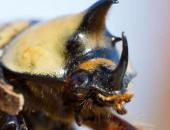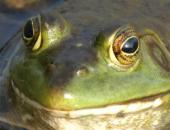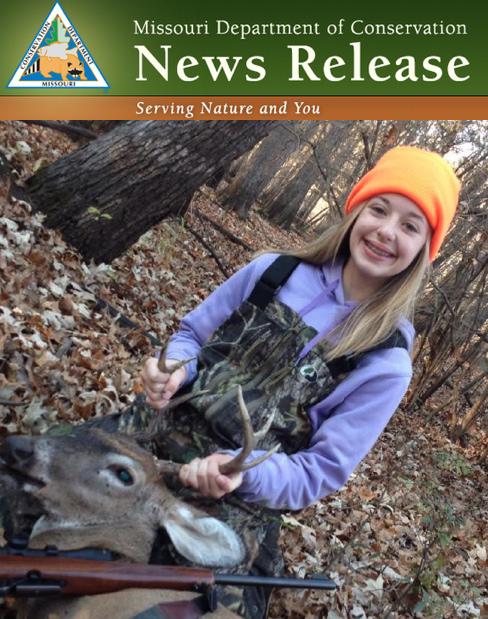
Chronic Wasting Disease infects only deer and other members of the deer family by causing degeneration of brain tissue, which slowly leads to death. The disease has no vaccine or cure and is 100-percent fatal.
“A primary way CWD is spread is through deer-to-deer contact,” explained MDC State Wildlife Veterinarian Kelly Straka. “Deer gathering and interacting in larger numbers can potentially increase the spread in an area. Young bucks can also potentially spread the disease to new areas as they search for territories and mates.”
REGULATION CHANGES
The regulation changes focus on slowing the spread of the disease in and around counties where CWD has been found. The changes will remove the antler-point restriction so hunters can harvest more young bucks. The changes will also increase the availability of firearms antlerless permits from 1 to 2 to help thin local deer numbers.
COUNTIES IMPACTED
These regulation changes add to similar measures MDC enacted in 2012 for six counties in northeastern Missouri after CWD was discovered in Linn and Macon counties. Counties affected by those regulation changes were Adair, Chariton, Linn, Macon, Randolph, and Sullivan.
The recent regulation changes add five more northeastern counties of Knox, Scotland, Schuyler, Shelby, and Putnam and come after six deer tested positive for CWD this past fall and winter in Adair County.
The recent regulation changes also include eight counties in central Missouri and come after a buck harvested in Cole County tested positive for the disease this past winter. Those counties are Boone, Callaway, Cole, Cooper, Miller, Moniteau, Morgan, and Osage.
“The challenge with CWD is that there is no way to fully eradicate the disease from an area once it has become established,” said Dr. Straka. “While we do not expect short-term population impacts from the disease, CWD is likely to have serious long-term consequences to the health of Missouri’s deer herd. Therefore, we have and will continue to focus on slowing the spread of the disease among deer in the affected areas, and trying to limit the spread to new areas of the state.”
CWD TESTING RESULTS
The Missouri Department of Conservation (MDC) reports that a total of 16 new cases of CWD were found in free-ranging deer through its testing efforts this past fall and winter. Of the 16 new cases, nine were found in Macon County, six in Adair County, and one in Cole County.
These 16 new cases bring the total number of Missouri free-ranging deer that have tested positive for CWD to 26 overall since the disease was first discovered in the state in 2010.
MDC collected more than 3,400 tissue samples for CWD testing from harvested and other free-ranging deer this past fall and winter. The Department has collected more than 43,000 tissue samples since it began testing for the emerging disease in 2001. MDC will continue increased testing efforts this fall and winter in areas where CWD has been found.
MDC is also considering regulation changes for the 2016-17 deer season that would require testing of deer harvested during the opening weekend of the fall firearms season in the 19 counties in and around where CWD has been found.
DON’T TRANSPORT CARCASSES!
Dr. Straka said that hunters can also spread the disease by transporting and improperly disposing of potentially infected deer carcasses. She explained that CWD can be spread through carcass parts that contain brain, spinal cord, eyes, spleen, or lymph nodes.
“To help prevent the spread of diseases, such as CWD, we strongly discourage deer hunters from moving carcasses of harvested deer from the immediate area,” she said. “If possible, remove meat in the field and leave the carcass behind. If it’s necessary to move the carcass before processing, place the remaining carcass parts after processing in trash bags and properly dispose of them through a trash service or landfill.”
She added that some parts of a harvested deer are safe to move out of the immediate area.
“Items that are safe to transport are meat that is cut and wrapped, or has been boned out,” she explained. “Also safe to transport are quarters or other portions of meat with no part of the spine or head attached, hides or capes from which all excess tissue has been removed, antlers including ones attached to skull plates or skulls that have been cleaned of all muscle and brain tissue, and finished taxidermy products.”
MDC is considering regulation changes for the 2016-17 deer season that would prohibit the movement of carcass parts from the 19 counties in and around where CWD has been found and prohibit the importation of certain cervid carcass parts into Missouri.
AVOID FEEDING DEER
Dr. Straka added that MDC strongly discourages hunters and others from feeding or providing salt and minerals to deer.
“Feeding and mineral sites can concentrate deer from a broad area and place them in very close proximity to one another,” she explained. “This can increase the transmission of the disease.”
A regulation that prohibits the feeding of deer and placement of consumable products -- such as salt and mineral blocks -- that are intended to concentrate deer is already in effect in Adair, Chariton, Linn, Macon, Randolph, and Sullivan counties.
MDC is considering a regulation change for the 2016-17 deer season that would expand that regulation to include the 13 additional counties in northeastern and central Missouri in and around where CWD has been found.
PUBLIC COMMENTS WELCOME
MDC welcomes public comments on the regulation changes under consideration for the 2016-17 deer season. Comment online at mdc.mo.gov/node/6.
DEER HUNTING IN MISSOURI
Missouri offers some of the best deer hunting in the country, and deer hunting is an important part of many Missourians' lives and family traditions. The continued spread of CWD in Missouri is likely to reduce future hunting and wildlife-watching opportunities for Missouri's nearly 520,000 deer hunters and almost two million wildlife watchers. Deer hunting is also an important economic driver in Missouri and gives a $1 billion annual boost to the state and local economies.
DEER HUNTING DATES
Fall deer hunting season dates are as follows.
Archery: Sept. 15 to Nov. 13 and Nov. 25 to Jan. 15
Urban Firearms: Oct. 9 to 12
Youth Firearms: Oct. 31 to Nov. 3 and Jan. 2 and 3, 2016
November Firearms: Nov. 14 to 24
Antlerless Firearms: Nov. 25 to Dec. 6
Alternative Methods: Dec. 19 to 29

Missouri - The Missouri Department of Conservation (MDC) announces that Missouri hunters, anglers, and trappers may use electronic images of permits on mobile devices as legal, valid permits beginning July 30. Prior to this, hunters, anglers, and trappers had to have paper copies of permits on them when pursuing these activities.
For fishing permits and most hunting permits, an electronic image of the permit -- such as a PDF (Portable Document Format) -- on a mobile device will be sufficient. The exceptions are for deer and turkey permits.
Use free MO Hunting mobile app for deer and turkey permits
Deer and turkey hunters must void their permits after harvesting related game animals and report their harvests using the Telecheck harvest reporting system. A simple electronic image of those permits is not sufficient to complete this process. MDC’s free MO Hunting mobile app takes care of these requirements.
MO Hunting enables Missouri hunters, anglers, and trappers to purchase, view, show, and store current hunting, fishing, and trapping permits and associated details. It also shows permits purchased during the previous year. MO Hunting also lets deer and turkey hunters electronically void their permits and Telecheck their harvests directly from the app. MO Hunting even uploads Telecheck confirmation numbers back to the mobile device and enables hunters to view details on all deer and turkey they have previously checked.
MO Hunting is available in the Google Play and iTunes stores. Get MO Hunting and learn more about the app at mdc.mo.gov/mobile/mobile-apps.
Deer and turkey tagging still required if hunters leave game
Deer and turkey hunters must still tag their harvested game if they leave the immediate presence of the harvested animal. Hunters using paper permits may simply attach the voided permit to the animal’s leg. MDC suggests sealing the paper permit in a zip-top bag and attaching the bag with string, wire, or tape. Hunters using the MO Hunting app must attach a label with their full name, address, permit number, and date of harvest to the deer or turkey’s leg if they leave the animal unattended.
Additional labeling requirements
After being Telechecked, harvested deer and turkeys may be possessed, transported, and stored by anyone when labeled with the permit or any label that includes the full name and address of the hunter, date taken, and Telecheck confirmation number.
Get more information on hunting, fishing, and trapping from MDC online at mdc.mo.gov.

Mourning doves, Eurasian collared doves, and white-winged doves may be taken from Sept. 1 through Nov. 9 from one half hour before sunrise to sunset with a combined daily limit of 15 and a combined possession limit of 45 for all three species.
Sora and Virginia rails may be taken from Sept. 1 through Nov. 9 from one half hour before sunrise to sunset with a combined daily limit of 25 and a combined possession limit of 75 for both species.
Wilson’s (Common) snipe may be taken from Sept. 1 through Dec. 16 from one half hour before sunrise to sunset with a daily limit of eight and a possession limit of 24.
Blue-winged, green-winged, and cinnamon teal may be taken from Sept 12 through Sept. 27 from sunrise to sunset with a combined daily limit of six and a combined possession limit of 18 for all three species.
American woodcock may be taken from Oct. 15 through Nov. 28 from one half hour before sunrise to sunset with a daily limit of three and a possession limit of nine.
Additional details about early migratory bird hunting regulations will be published in MDC’s “2015 Migratory Bird Hunting Digest” available later this summer where hunting permits are sold, at MDC offices and nature centers, and online at mdc.mo.gov.
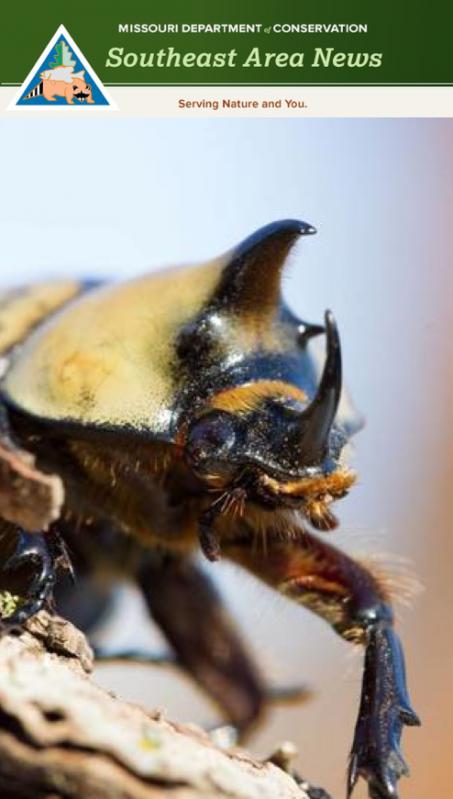
“We’ve been collecting bugs for our insect zoo for weeks and we can’t wait to show them off at this event,” said Jordi Brostoski, a Cape Nature Center naturalist.
Though they may be tiny, bugs have big stories to tell about adaptations and the many ways they survive. Certain types of cicadas spend more than a decade underground before emerging as adults. Some bugs, like water striders can actually walk on water due to the surface tension of the water and the strider’s brush-like leg structure. A dragonfly nymph may be a bug, but that doesn’t stop it from being a carnivore and devouring a tadpole.
“We may underestimate the lives of bugs, but I think folks will find there’s a lot to discover about these little creatures,” Brostoski said.
This event will explore those stories through insect hikes, a bug zoo and crafts.
No registration is required for this event and all ages are welcome.
Hercules beetles have amazing strength, as they're able to lift more than 850 times their own weight. Learn more fascinating bug stories at Insectigations, July 18, at the Cape Girardeau Conservation Nature Center. (MDC file photo)
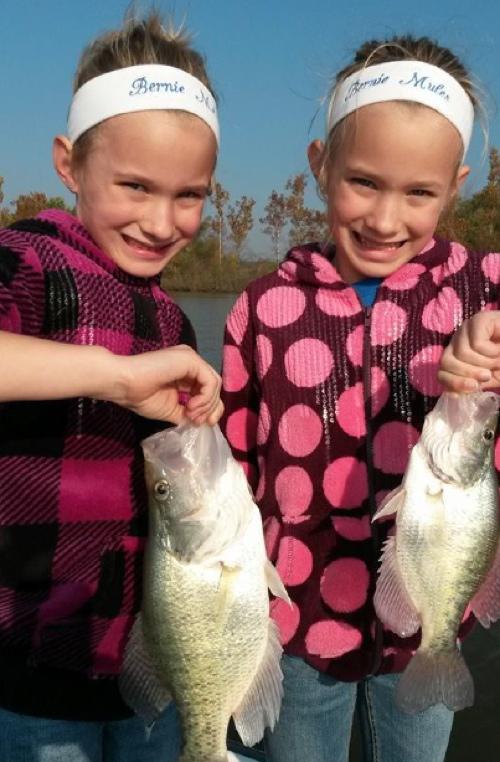
Missouri - One of the most catchable fish in Missouri waters, especially in the summer months, is the group known as panfish, and the peak catching time is now.
In late June and early July, concentrations of bluegills will be spawning along shallow lake or pond shores.
Look for craters of round light spots on the bottom, which are the nest sites.
Bluegills and sunfish relatives are excellent table fare, possibly better flavored than walleye. These panfish may be filleted or scaled, then rolled in seasoned flour and fried.
Jack Anderson and his wife of 42 years, Charlotte, settled in his boat and cruised to their favorite bluegill and crappie fishing hole. Anderson pointed out that his wife has matched casts with him ever since they made a honeymoon fishing trip to the Lake of the Ozarks back in 1973.
Like many Missouri anglers, the Andersons have been called panfish anglers, which is appropriate for people who primarily fish for bluegill, perch and crappie.
Charlotte said, " We like to fish for panfish because we like to eat what we catch. You can't get a better tasting fish than a crappie or bluegill."
On one of their latest fishing trips, the goal was to put enough fish in the boat for a couple of meals. In seconds after arriving at one of their favorite spots, they cast their hooks with earthworms. In less time it took to say, "I got one," Jack pulled in an 8-inch fighting bluegill. As he spoke, his wife hauled in another big bluegill. In less than an hour, they had caught about two dozen fish including a one-pound crappie.
Anderson said, " I have done a lot of bank fishing in my life, particularly when I had trouble with my back. Like anyone who fishes for panfish from the bank the biggest problem is getting your line far enough out to catch fish. I found by using a small sinker and a bobber works best."
It doesn't matter if the couple are fishing from the bank or in a boat, they catch their share of panfish and then some.
A closer look at Missouri panfish:
Green sunfish: State record is 2 pounds, 2 ounces taken from Stockton Lake back in 1971. Its back is dark olive with lighter sides. The gill cover lobe is black, except for light colored red margin. Six years would be a long life for green sunfish.
Bluegill: State record is 3 pounds taken back in 1963 from a pond. Like most of the panfish, bluegills provide good table fare. They may be best when coated with seasoned flour and fried in butter. The bluegill's fighting qualities are excellent. They can be taken on a wide variety of lures and bait.
White crappie: The state record is 4 pounds, 9 ounces taken in 2000 from a pond. It has the same general appearance as a black crappie except slightly more elongated. It also has sides of silver with shades of purple and seven to nine vertical bars. It's good on the table, but a notch lower on the culinary scale than the black crappie. They generally don't fight as well as the black crappie.
Black crappie: The state record is 4 pounds, 8 ounces, taken from a farm pond in 1967. The black crappie can live 10 years or longer. It has dark specks on sides than are both yellow and green. It offers good table fare. Black crappie are good fighters who prefer clearer water than the white crappie.
Panfishing techniques
For panfish, most anglers rely on small hooks tipped with minnows or worms. Spinners and small spoons work on panfish.
Fly fishing anglers have good luck with panfish species by casting small poppers to top feeding fish and using wet flies to drop into feeding zones.
Pan-fishermen will want to look for dropoffs during the summer. Still-fishing with a small jig or flyfishing with wet flies or small poppers is effective for bluegills.
With thousands of ponds, many large impoundments and streams to fish plus a season that never closes, Missouri pan-fishermen are ready for a summer of good fishing and great eating.


